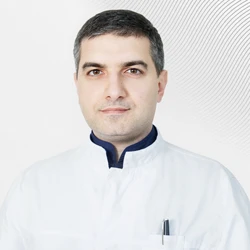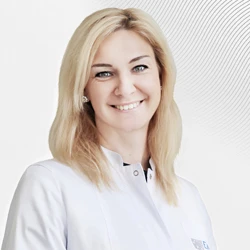The frequency of administration of zolendronic acid can be safely reduced by 67% in patients suffering from breast cancer with bone metastases. Clinical studies have shown that reducing dosages leads to a reduction in serious side effects of the drug, such as osteonecrosis of the mandible and renal toxicity.
The frequency of administration of zolendronic acid can be safely reduced by 67% in patients suffering from breast cancer with bone metastases. The data from the Phase III clinical trial presented at the 2014 ASCO Annual Symposium convincingly showed that reducing dosages leads to a reduction in serious side effects of zolendronic acid, such as osteonecrosis of the mandible and renal toxicity.
Zolendronic acid, being a nitrogen-containing bisphosphonate of the 3rd generation, reduces the severity of clinical manifestations of bone metastases. The standard mode of administration of the drug is 4 mg intravenously every 3-4 weeks for the 1st year. The optimal duration of the treatment regimen has not yet been presented. However, long-term monthly use of zolendronic acid (more than 3 years) It can lead to serious complications such as osteonecrosis of the jaw and chronic renal failure.
The double-blind multicenter phase III OPTIMIZE-2 study included 403 breast cancer patients (mean age 59 years) with bone metastases who were treated with intravenous bisphosphonates for 10 to 15 months. The patients continued treatment with zolendronic acid monthly (200 patients) or every 3 months (203 patients) for 1 year. Neither the researcher nor the patient could know what specific treatment they were receiving: the women in the control group were given a placebo. The characteristics of the patients were identical in both groups.
The result was the ratio of skeleton-related events (CVD), defined as the ratio of patients with ≥1 CVD (i.e., pathological fracture, spinal cord compression, with the need for radiation therapy or orthopedic intervention). The term "noninferiority" was specifically introduced, i.e. "no deterioration" when prescribing zolendronic acid with an extended interval compared to standard treatment. At the same time, the time before the onset of CVD, the dynamics of bone markers were studied, pain was assessed on a pain scale and the safety of the prescribed treatment.
The results were presented at a median follow-up of 11.9 months. At the same time, the primary point of the study was achieved: the results of prescribing zolendronic acid once every 12 weeks were no worse than the monthly regimen. The differences were 1.2% in CCC ratio (95% CI, 7.5%-9.8%; P = .724), at 22% (n = 44) and 23.2% (n = 47) in the first and second observation groups, respectively.
Secondary goals were also comparable between the two groups. The time to the onset of the first CVD (HR = 1.06; 95% CI, 0.70-1.60; P = .792) and the deviations in bone remodeling markers were also identical.
The toxicity profiles were also comparable between the two groups, with side effects occurring equally frequently.Grade 3-4 toxicity was described in 47.5% (n = 94) and 42.6% (n = 86) of the follow-up groups, respectively. The severity of pain and the need for painkillers did not vary in the groups.
A less intensive bisphosphonate regimen minimized the incidence of serious side effects, such as osteonecrosis of the mandible, to 0. Renal toxicity was also lower in this mode, 7.9% (n = 16) versus 9.6% (n = 19)
A less intensive bisphosphonate regimen minimized the incidence of serious side effects, such as osteonecrosis of the mandible, to 0. Renal toxicity was also lower in this mode, 7.9% (n = 16) versus 9.6% (n = 19)
Thus, after 9-12 months of monthly administration of intravenous nitrogen-containing bisphosphonates, it is advisable to continue their administration once every 12 weeks. This does not lead to a decrease in the effectiveness of treatment of metastatic bone disease in breast cancer in women, while increasing the psychological comfort of patients and, importantly, reducing the cost of drug treatment for this complex category of patients
The OPTIMIZE-2 study was sponsored by Novartis, the manufacturer of zolendronic acid.
Hortobagyi GN, et al. ASCO 2014. Abstract LBA9500
BP, bisphosphonate; IV, intravenous; q4w, every 4 weeks; q12w, every 12 weeks; SRE, skeletal-related events. AE, adverse event; ONJ, osteonecrosis of the jaw; q4w, every 4 weeks; q12w, every 12 weeks; SD, standard deviation.
Was this information helpful?
Questions and answers
Baby teeth - treat or not?
Baby teeth do not need to be treated, because they will drop out in any case - is it true?
If the teeth are not cleaned properly white carious spots will appear underneath the soft plaque. This initial stage of decay is reversible: with proper hygiene the stain will gradually fade. The next stage is when the defect appears: the integrity of the enamel (the outer shell of the tooth ) is broken and a
cavity appears in the tooth . From this moment caries begins to develop more rapidly since the dentin (the hard tissue of the tooth located under the enamel) is less dense than enamel, and it becomes difficult to clean the teeth properly.
If microorganisms get into the cavity of the tooth where the nerve passes, this will cause pulpitis - inflammation of the pulp of the tooth (the pulp consists of blood vessels and nerves), which may be accompanied by pain, but in the milk teeth is usually asymptomatic.
Pain may occur later, when the nerve has died completely and infection occurs outside the tooth - in the bone. In addition to pain, pulpitis is sometimes accompanied by swelling of the gums, fistulas (channels between the foci of the infection and the gum) and loose teeth .
The pathological process - from the appearance of a white spot to the development of inflammation outside of the tooth root - can be fast and take a few months or last for years, depending on many factors.
To avoid problems with your child’s teeth , you should visit the paediatric dentist regularly. The first appointment with the dentist should be when the child is 1.5 years old. Following on from this there should be regular check-ups every 6 months, or more frequently as directed by the doctor.
...more
Diagnosed infertility - what to do?
I’m 27 years old, diagnosed infertility since 5 years ago, tubal factor and only one working ovary. Have gone through 3 tries of in vitro fertilization, one was stimulated, had no response, in all 3 cases I had only one oocyte. AMH 0,91. Do you think I have a chance for a pregnancy with my own oocyte? Sperm quality
is good.
...more
Yes, of course, you should fight for your oocytes. There is a variety of minimal stimulations: modified cycles, natural cycles etc. If these methods don’t work, so we will think about donor cells. But you must definitely give your ovaries a chance.
Severe cervical dysplasia
I have a transplanted kidney and I was recently found to have severe cervical dysplasia. The biopsy results are not yet back, but the physician says I must have my uterus and cervix removed. My question is: Can I have the operation in your clinic?
For severe cervical dysplasia, usually cervical conization is sufficient. If you have no plans for reproduction, or you already have children, then theoretically you can discuss having a laparoscopic removal of the uterus and cervix, but these decisions should not be made through correspondence. If you have a
referral for an operation in the city where you live, and have the opportunity to come to Moscow, come for a free consultation using "Second Opinion" promotion. If necessary, we can quickly provide operative treatment at a discount.
...more 
Vladimir Nosov
09 November 2015
Emergency's Working Hours
What are your hours?
We are open seven days a week, 24 hours a day, 365 days a year.
Nonbacterial Prostatitis
For over a year now I have suffered with nonbacterial prostatitis. I am 65 years old and my prostate is 50 cubic cm. I have treated this every way possible to no avail. As I understand it, there are only 2 possibilities: 1) Daily painkillers and sleeping pills which leave me in a drug-induced stupor. 2) Radical
prostatectomy, although I don't have cancer and my PSA is around 1. I don't live in Russia and it isn't possible to have a radical prostatectomy here. Can I have this operation in your center? Because of the severe inflammation, I can only sit and walk for limited amounts of time. I am near insane from the constant pain and sleeplessness.
...more
As with all civilized urologists in the civilized world, we COMPLETELY remove the prostate ONLY in cases of prostate cancer. At the same time, if you would like to be seen by us for assistance, at your convenience we can examine you and treat your problem.







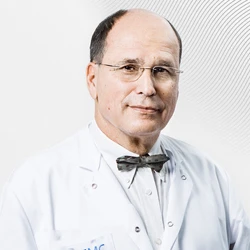
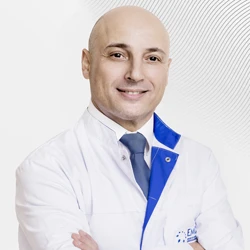








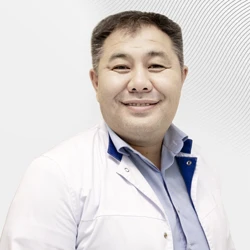
.webp)

.webp)


